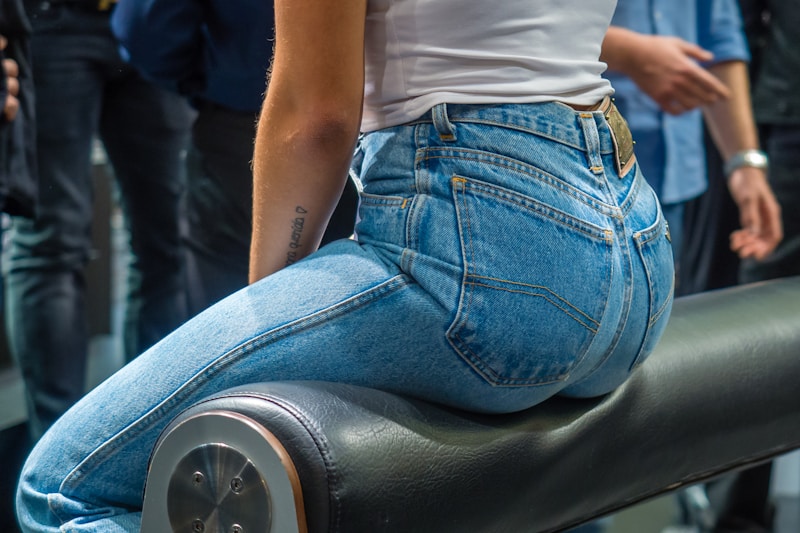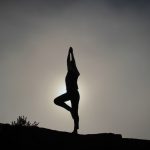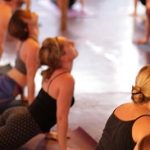Our necks are incredible. A delicate column of bone and soft tissues that support the head and protect the vital plumbing that keeps us alive. It needs to be strong and supportive at the same time as mobile and versatile. So how does it manage all of this? And, as yogi’s, how can we look after our necks? Read on!
Anatomy
The neck, or cervical spine, is made up of seven bones, or vertebrae, which join the skull above and the thoracic spine
below. There are shock absorbing cushions called vertebral discs between all of the cervical vertebrae except the top two. The joint between the skull and the cervical spine allows the head to nod on top of the neck while the one between the top two cervical vertebrae generates about 45 degrees of rotation to each side. The remainder of the cervical joints give the rest of the rotation that allows us to look over our shoulders; the flexion that takes our chin towards our chest and allows us to look up as well as letting us tilt our head side to side.
All of this movement is controlled by a huge array of muscles that work to allow enough movement but not too much. These vary in size from tiny muscles a few centimetres long between each pair of vertebrae right up to the large trapezius muscle that makes up so much of the back of the neck and upper back. And packed in around the bones, discs, and muscles are ligaments and fascia that act as guy ropes to prevent too much movement.
What can go wrong?
Many people will suffer from aches and pains in their neck at some time in their life. Some will receive a diagnosis that implicates one particular structure in the neck, particularly if they have had a scan or X-Ray. But the bottom line is that, because the neck is complex, no single structure can cause pain in isolation. And though this may seem a negative thing, it most certainly is not! What it means is that no matter what the problem is, doing a few simple things will make life more comfortable if you have neck pain. Here’s how:
First aid and neck care
- Move it – Though it is tempting to keep still when your neck hurts, this is exactly the opposite of what you need to do. Gently moving your neck as far as you can comfortably in each direction actually increases nutrition to the discs and circulation to the soft tissue.
- Posture – A lot of neck pain caused by poor posture. Too much looking down at your phone or slouched at a desk puts the neck into positions that overload parts of the neck causing pain and ultimately allowing other parts to shorten and get tight. The neck is designed to have a small forward curve when seen from the side, and the head is ideally balanced on the top vertebra. This position uses least muscle power and has fewest ligaments under tension – perfect!
- Grow tall – Gently drawing up through the crown of the head to gain length in the back of the neck as you tuck the chin to a level position helps to activate the deep muscles of the core (yes, the neck has core muscles too..) and these, in turn help to protect the neck.
Yoga and neck problems – can I still practice?
Definitely! A neck pain or injury does not have to stop you practicing with care and will often help to get rid of the problem faster. Basically, you can continue to practice anything that is not causing you more pain and here are a few tips that might help:
- Alignment – in all postures keep the neck as close to a neutral posture as you can. Keep that little forward curve and chin level as you grow through the crown of the head. This is easily practiced in tadasana, or mountain pose, until you have the hang of it. Then try in all of the standing and sitting poses. Definitely avoid the temptation to allow your head to drop back and if you are looking up in a pose, keep the back of the neck long.
- Headstands – Making sure you engage your core and the whole of the shoulder girdle muscles in the upper back by grounding through your hands or forearms reduces pressure through the head and neck. Alternatively, you could use one of the shoulder stools that keeps all pressure away from the neck or simply not do headstands. Not all yogis have to stand on their heads, you know…
- Brahma mudra – this sequence involves sitting tall and slowly looking first over the right shoulder, then over the left and back to the middle. Next turn the face up as your eyes look down to the tip of the nose then drop the chin to the chest as your eyes look up. Some texts teach breath control and or sound as you move. The movement is always slow and fluid; only go as far as you can comfortably in each direction. Never push into pain or restriction.
So what is the secret for a happy healthy neck? I think it is to balance your head on your spine; keep length in the neck at all times on and off the mat and practice Brahma Mudra everytime you practice. Easy when you know how!













